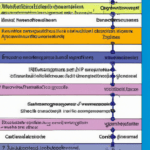Problem identification is the crucial first step in finding effective solutions. It involves recognizing and understanding the root cause of an issue or challenge. By carefully assessing the situation, we can gain insight into key factors contributing to the problem. This requires asking probing questions, collecting data, and analyzing patterns and trends. A deep understanding of the problem helps guide decision-making, prioritize actions, and allocate resources effectively. Successful problem identification requires open-mindedness and a willingness to challenge assumptions. It is essential to involve diverse perspectives and stakeholders to ensure a comprehensive understanding of the problem. By accurately identifying and defining the problem, we lay the foundation for finding innovative and impactful solutions.
Table of Contents
- Causes of problems
- Common pitfalls in problem identification
- Impact of problems
- Importance of problem identification
- Problem identification techniques
(Module 1.1 — Problem-Solving Framework: Problem Identification)
Problem identification is a vital step in finding effective solutions. When we identify a problem, we acknowledge its existence and gain a clear understanding of what needs to be addressed. Without proper problem identification, we may waste time and resources on ineffective solutions.
To identify a problem, we must first analyze the situation and gather relevant information. This can involve conducting research, collecting data, and engaging in discussions with stakeholders. By doing so, we can gain insights into the root causes and impacts of the problem.
Once we have gathered enough information, we can define the problem in a concise and specific way. It is important to avoid generalizations and be as precise as possible. For example, instead of stating “there is low employee morale,” we can specify “there is a lack of communication and recognition among team members, leading to decreased motivation.”
Identifying the problem accurately is crucial because it sets the foundation for finding the right solutions. It helps us focus our efforts on addressing the core issues rather than just treating the symptoms.
Moreover, effective problem identification encourages us to think critically and consider multiple perspectives. We should involve different stakeholders and seek their input to gain a comprehensive understanding of the problem. This collaborative approach enhances the chances of finding innovative and sustainable solutions.
In conclusion, problem identification is an essential step in problem-solving. It enables us to understand the issue at hand, define it clearly, and gather the necessary information to find effective solutions. By investing time and effort in this stage, we increase the likelihood of achieving positive and lasting outcomes.
Causes of problems
Problem identification involves understanding the root causes that lead to various issues. Identifying the causes of problems is crucial for finding effective solutions and preventing them from recurring. There are several common factors that contribute to the emergence of problems.
One major cause of problems is a lack of communication. When communication breaks down, misunderstandings arise, and conflicts escalate. Miscommunication can occur between individuals, within teams, or even between different departments within an organization. Without clear and effective communication channels, problems are more likely to occur and persist.
Another cause of problems is a lack of proper planning and organization. When proper planning is absent, tasks become disorganized, deadlines are missed, and resources are misallocated. This can result in a range of issues, from inefficiencies and delays to cost overruns and missed opportunities. Without a solid foundation of planning and organization, problems are bound to arise.
Furthermore, problems often stem from inadequate resources. Whether it is a lack of funding, staffing, or equipment, insufficient resources can hinder progress and contribute to the emergence of problems. When the necessary resources are not available, tasks become more challenging to accomplish, and quality may suffer. Inadequate resources can create a domino effect, leading to a cascade of problems in various areas.
In addition, problems can be caused by external factors beyond our control. These can include changes in market conditions, economic downturns, or natural disasters. External factors can disrupt workflow, hinder productivity, and create unforeseen challenges. Being aware of these external factors and their potential impact is crucial for problem identification and proactively addressing them.
Moreover, problems can arise from a lack of training or skills. When individuals are not adequately trained or do not possess the necessary skills to perform their tasks, errors and inefficiencies can occur. Continuous learning and upskilling are essential in preventing problems caused by skill gaps or lack of knowledge.
In conclusion, problem identification involves understanding the causes that underlie various issues. Lack of communication, improper planning, inadequate resources, external factors, and skills gaps are all common factors that contribute to the emergence of problems. By recognizing and addressing these root causes, effective solutions can be developed and implemented to mitigate or prevent future problems.
Common pitfalls in problem identification
Common pitfalls in problem identification can hinder the effectiveness of problem-solving efforts. Recognizing these pitfalls is essential for achieving successful outcomes.
One common pitfall is rushing the problem identification process. It’s important to take the time to thoroughly understand the problem before attempting to solve it. Skipping this step can lead to a shallow understanding of the underlying issues and result in ineffective solutions.
Another pitfall is failing to involve stakeholders in the problem identification process. Stakeholders bring unique perspectives and valuable insights. By neglecting to include them, the problem identification process becomes limited, and potential solutions may overlook important considerations.
A third pitfall is relying too heavily on assumptions and preconceived notions. Problem identification requires an open mind and a willingness to challenge preconceived ideas. Failing to do so can lead to biased problem statements and misguided solutions.
Furthermore, a common pitfall is focusing on symptoms rather than the root cause. Addressing symptoms may provide temporary relief, but the underlying problem will persist. Understanding the root cause is crucial for developing effective solutions that have a lasting impact.
Additionally, overlooking the importance of data and analysis can hinder problem identification. Objective data provides valuable insights and helps to uncover patterns and trends. Ignoring or downplaying the role of data can result in a superficial understanding of the problem and ineffective problem-solving efforts.
Lastly, another pitfall is neglecting to consider the broader context and interdependencies. Problems are often interconnected and influenced by various factors. Failing to consider these interdependencies can lead to incomplete problem statements and narrow-minded solutions.
Avoiding these common pitfalls requires a deliberate and disciplined approach to problem identification. Taking the time to thoroughly understand the problem, involving stakeholders, challenging assumptions, focusing on root causes, using data and analysis, and considering the broader context are all essential steps in the process. By being aware of and avoiding these pitfalls, individuals and organizations can improve their problem-solving capabilities and achieve more meaningful and sustainable solutions.
Impact of problems
The impact of problems can be far-reaching, affecting various aspects of our lives. When problems arise, they have the potential to disrupt our daily routines, cause stress, and hinder our ability to achieve our goals. Problems can manifest in different forms, such as personal challenges, societal issues, or professional obstacles. Regardless of their nature, problems have a significant impact on our well-being and overall satisfaction.
On a personal level, problems can take a toll on our mental and emotional health. They can cause anxiety, depression, and lead to a sense of helplessness. With each problem we encounter, we are faced with the task of finding a solution, which can be mentally exhausting. Moreover, dealing with ongoing problems can leave us feeling drained and overwhelmed, affecting our ability to enjoy life and maintain healthy relationships.
In a societal context, problems can lead to social unrest and turmoil. They can result in protests, demonstrations, and even violence. When significant societal issues are left unaddressed, they can breed division and resentment among different groups. This can lead to a breakdown in communication, trust, and mutual understanding, further exacerbating the problems at hand. The impact is not limited to those directly affected by the issues; it ripples through the entire community, causing frustration and a sense of disillusionment.
Professionally, problems can hinder our progress and hinder our ability to succeed. Whether it’s a conflict with a colleague, a difficult boss, or a decline in business, problems in the workplace can create a toxic environment that stifles innovation and productivity. When problems persist, employees may feel demotivated and disengaged, leading to a decrease in overall performance and quality of work. This can have long-lasting effects on both individual careers and the success of organizations.
It is essential to recognize that problems are an inevitable part of life. However, how we approach and manage them can significantly impact the outcomes. By addressing problems head-on, seeking support when needed, and developing problem-solving skills, we can mitigate their negative effects. It is crucial to remember that problems are not insurmountable obstacles but rather opportunities for growth and personal development.
In conclusion, problems have a profound impact on our lives, affecting our mental and emotional well-being, social dynamics, and professional success. By acknowledging the impact problems have and adopting effective problem-solving strategies, we can navigate through life’s challenges with resilience and ultimately find solutions that lead to personal and collective growth.
Importance of problem identification
Problem identification is a critical step in finding effective solutions. It allows us to understand the root causes of the issue at hand, ensuring that our efforts are focused and productive. By taking the time to identify the problem accurately, we can avoid wasting time and resources on ineffective or temporary fixes.
One of the key benefits of problem identification is that it provides clarity. It helps us define the problem in specific terms, making it easier to communicate with others and enlist their support. By clearly articulating the problem, we can gather the right people and resources to address it effectively.
Furthermore, problem identification enables us to prioritize our efforts. It allows us to distinguish between urgent and important problems, ensuring that we allocate our time and resources wisely. By focusing on the most significant issues, we can make a more significant impact and achieve long-lasting solutions.
Another essential aspect of problem identification is that it encourages creativity and innovation. By thoroughly understanding the problem, we can think outside the box and explore unconventional approaches. This mindset shift can lead to groundbreaking solutions that would have otherwise been overlooked.
Moreover, problem identification helps us anticipate future challenges. By understanding the underlying causes and patterns of a problem, we can proactively prevent its recurrence. This proactive approach saves time, effort, and resources in the long run.
Furthermore, problem identification promotes a culture of continuous improvement. It encourages us to learn from our mistakes and adjust our strategies accordingly. By regularly identifying and addressing problems, we can enhance our processes, products, and services, leading to overall growth and development.
Lastly, problem identification fosters collaboration. It brings people together, encouraging open dialogue and sharing of ideas. Through collaboration, diverse perspectives and expertise can be leveraged to develop robust and holistic solutions.
In conclusion, problem identification is of utmost importance in solving issues effectively. It provides clarity, prioritization, creativity, anticipation, continuous improvement, and collaboration. By investing time and effort in problem identification, we can ensure that our solutions are targeted, efficient, and sustainable.
Problem identification techniques
Problem identification techniques are essential for businesses to effectively address and resolve issues that may arise. One popular technique is brainstorming, where a group of individuals discuss and generate ideas to identify potential problems.
Another technique is root cause analysis, which involves identifying the underlying cause of a problem rather than just treating the symptoms. This can be done by asking “why” repeatedly to uncover the root cause, allowing for a more targeted solution.
One effective technique is the fishbone diagram, also known as the Ishikawa diagram. This diagram helps to visualize the possible causes of a problem by categorizing them into different branches. By analyzing these branches, it becomes easier to identify the root cause of the problem and find a suitable solution.
Another valuable technique is the 5 Whys method. This involves repeatedly asking “why” to delve deeper into the cause of a problem. By asking “why” five times, it is possible to uncover the root cause, enabling businesses to address the issue at its core rather than dealing with superficial fixes.
SWOT analysis is also a useful technique in problem identification. It involves analyzing the strengths, weaknesses, opportunities, and threats faced by a business. By identifying weaknesses and threats, businesses can pinpoint potential problems and develop strategies to overcome them.
Additionally, data analysis plays a crucial role in problem identification. By analyzing data collected from various sources, businesses can identify patterns and trends that may indicate potential problems. This allows for proactive measures to be taken to address the issue before it escalates.
Lastly, customer feedback is a valuable resource in problem identification. By actively seeking and listening to customer feedback, businesses can gain insights into potential issues and areas of improvement. This helps to ensure that the business is meeting customer needs and expectations, resulting in enhanced customer satisfaction.
In conclusion, problem identification techniques are vital for businesses to effectively address and resolve issues. Through techniques such as brainstorming, root cause analysis, fishbone diagrams, the 5 Whys method, SWOT analysis, data analysis, and customer feedback, businesses can identify problems and develop appropriate solutions. By utilizing these techniques, businesses can enhance productivity, foster innovation, and ultimately achieve success.













